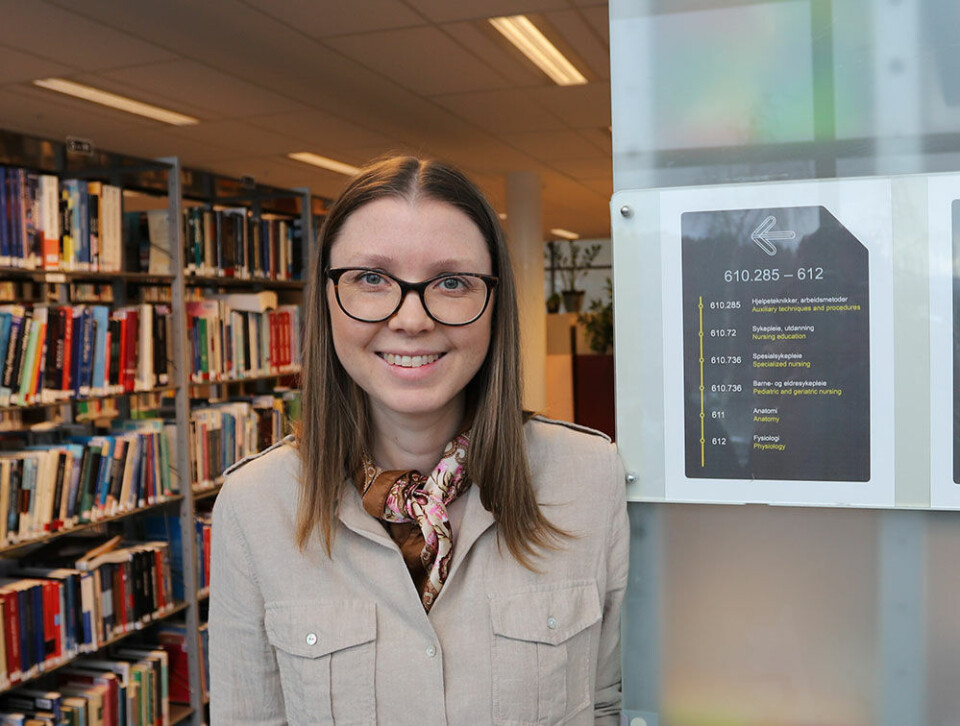THIS ARTICLE/PRESS RELEASE IS PAID FOR AND PRESENTED BY NTNU Norwegian University of Science and Technology - read more

Patient involvement: Doctors won't ask if you want treatment when you're having an acute heart attack
Patient involvement is a statutory right but not always possible in emergencies and life-threatening situations. Rehab and lifestyle changes however, work far better if the patient is involved.
“Patient involvement is often useful as a political slogan, but a lot of factors affect how it works in practice.”
Elise K. Bårdsgjerde, a PhD candidate at NTNU’s Department of Health Sciences in Ålesund, recently defended her doctoral dissertation in early March. She has studied participation in various phases of the patient process when it comes to myocardial infarction, from the perspective of patients, nurses and doctors.
The study shows that patient involvement looks different in different situations.
“You can’t always weigh involvement equally,” she says.
Treatment over involvement in the acute phase
Every quarter, more than 12,000 Norwegians have a heart attack. It happens fast and needs to be treated quickly with drugs and a procedure called PCI, or coronary angioplasty.
“Nine hospitals in Norway do the PCI procedure, so treating the patient often involves air ambulance transport,” says Bårdsgjerde.

“The most severe cases require treatment within 120 minutes of the heart attack,” she says.
The interview studies carried out by Bårdsgjerde show that when every minute counts, both patients and healthcare professionals found that the need for patient involvement was less. Treatment has to take priority over participation in an emergency and life-threatening situation.
“The patients were transported by helicopter to get to the hospital quickly, but reported that they received brief and precise information in those dramatic moments,” she says.
Good information during treatment
Patients are awake during the hospital PCI procedure. Health personnel provided information along the way about what they were doing, what they saw on the X-rays and what treatments they were administering.
During this phase, the study found that patients reported receiving particularly good information and involvement.
Lack of continuity hinders participation
In a more stable phase later in the patient process, Bårdsgjerde found that a lack of continuity and coordination hindered patient involvement.
“About 50 per cent of patients need to be transported during treatment, because few hospitals can do the PCI procedure. After the acute treatment is completed, the patient is either discharged or moved to a local hospital,” she says.
This means that patients often are treated by different health professionals and may experience the health services as fragmented. The study shows that the consequence could then be that the patient is less consistently informed about their health, medicine and rehabilitation status.
Bårdsgjerde has defined a set of framework factors that she found hindered patient involvement. These are legislation, clinical guidelines, time, resources, health expertise and organisation of health services.
“Strengthening the collaboration between the various hospitals is key, and the health personnel wanted patient information checklists,” Bårdsgjerde said.
Patients and healthcare professionals sometimes assess things differently. Health personnel said that checklists could contribute to stronger follow-up and continuity.
Patients, on the other hand, said that receiving a lot of information while they were in hospital might not be the best timing. One of them said in the interview: “If they had given me a lot of information, I don’t know if I would have been able to absorb it all.”
Rehabilitation increases patients’ understanding
Patients are discharged from hospitals relatively quickly, and that can have an impact on how much information they receive.
“The next step in the treatment process is offering cardiac rehabilitation at the local hospital. The patients said that they gained more knowledge about their own health through the information they received from taking part,” says Bårdsgjerde.
Once patients better understood their situation, Bårdsgjerde found that they were better equipped to take responsibility and make good choices for their own health. Rehab strengthened their health expertise. Health professionals believe that patient participation is key in this phase. Making lifestyle changes requires committed and involved patients.
Collaborating better and rehab are key factors
Improving collaborative systems between hospitals and focusing on cardiac rehabilitation and increased health competence seem like the way to go to improve health services. Bårdsgjerde is clearly very engaged in what she is researching, and she is not done with the topic.
“It motivates me to see that the [Norwegian] health trusts, health personnel and teachers are already paying attention to this research. I think I’m able to share important knowledge about patient involvement that can strengthen our health services, and I plan to continue my research,” she says.
The project is a collaboration between NTNU, Møre og Romsdal Hospital Trust and Central Norway Health Authority. Møre og Romsdal County Municipality is funding the project.
See more content from NTNU:
-
Why are pregnant women in Norway so worried?
-
Politics on Facebook: Populist parties choose divisive issues on purpose
-
Social media is connected to cyberbullying – but not how we thought
-
Forskere ved NTNU får nesten 24 millioner av EU for å lage nye strømomformere
-
This helps the youngest children enjoy school more
-
Can we tap the ocean’s power to capture carbon?





































